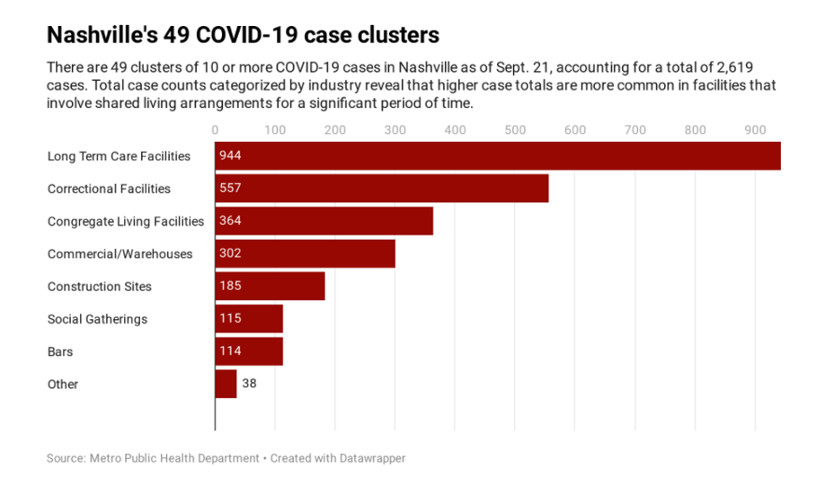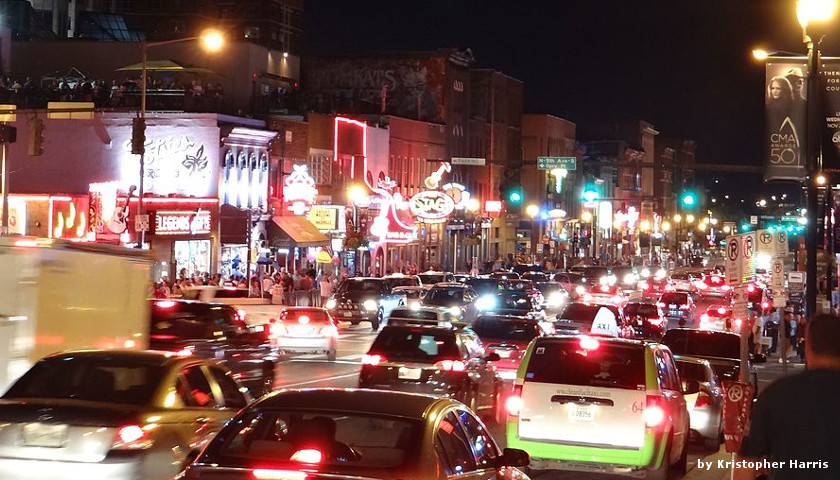by Vivian Jones
Of the 2,619 cases accounted for on a list of 49 COVID-19 hotspots in Davidson County connected with 10 or more cases of COVID-19, 114 – or 4% – were tied to the six bars on the list.
The list of 49 case clusters in Nashville was released by Metro Public Health officials.
The overwhelming majority of clusters and related cases were tied to locations that involve shared living arrangements over a significant period of time, including 19 long-term care facilities, six correctional facilities and five congregate living facilities such as homeless shelters, rehab centers and assisted living facilities. The three categories account for 30 of the 49 total case clusters, and 70 percent of the related cases.

The highest case count cluster was at the Tyson Foods meat processing facility in Goodlettsville, accounting for a total of 280 cases. The second-highest case count was at the Tennessee Prison for Women. The Nashville Rescue Mission’s shelter at the fairgrounds had the third-highest case count, accounting for 156 cases.
Construction sites accounted for 185 of the cases, spread across five locations. Social gatherings, including a wedding, a fundraiser, a sports event and a church retreat, accounted for a total of 115 cases. Sixteen clusters were connected with 50 or more cases.
Metro health officials said the number of cases linked to bars in Nashville likely is significantly higher because out-of-town visitors would not develop symptoms until after they have left the city and are beyond the reach of contact tracers.
In total, the list included 19 long-term care facilities, six correctional facilities, six bars, five construction sites, five congregate living facilities, four social gatherings, two commercial warehouses, one office and one apartment complex.
– – –
Vivian Jones reports on Tennessee and South Carolina for The Center Square. Her writing has appeared in the Detroit News, The Hill, and publications of The Heartland Institute.






Infection avoidance can be modeled not measured, at my org I am unable to claim avoidance as a cost savings unless there is some baseline which corporate will allow me to compare to. That being said we had data that showed construction was spreading the Rona but they were still allowed to be open. This demonstrates that data was being ignored to make politically driven decisions, period. No one believes the WH guidance claim to shut down bars – and I doubt there will be evidence of that in any dated documents either.